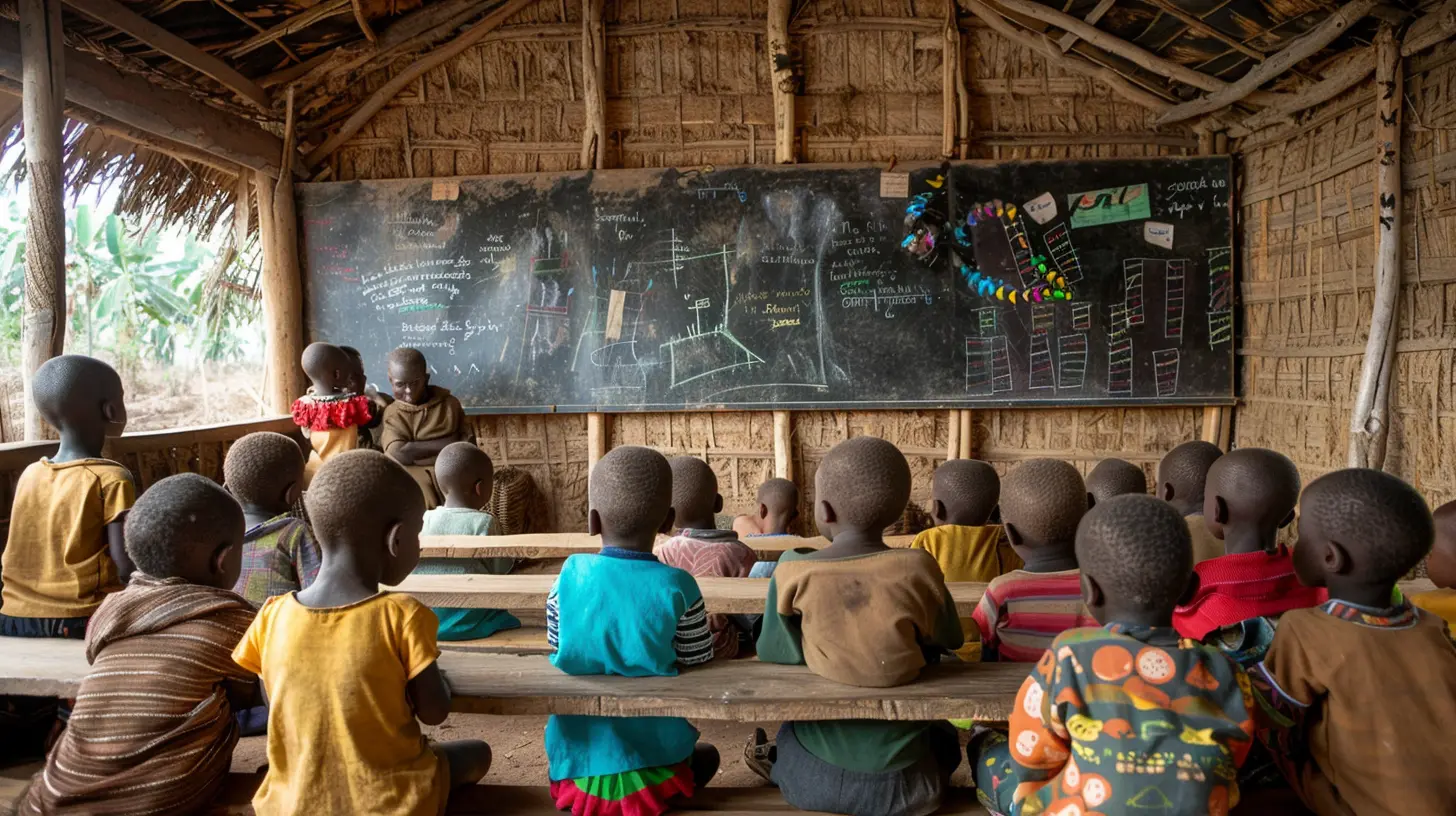22 March 2025
Education is often hailed as the great equalizer, a means to break the cycle of poverty and lift individuals to new opportunities. However, this ideal is far from reality for many students in rural communities. Across the United States—and in many parts of the world—rural schools are often underfunded, which limits their ability to provide quality education to their students. The disparities in school funding between urban, suburban, and rural communities are glaring, and the consequences can be profound.
How can we address these inequities to ensure every student, regardless of where they live, has access to a high-quality education? Why is it that students in rural areas are often left behind? Let’s dig into the issue of school funding inequities, explore the causes, and, most importantly, look at potential solutions.

The Funding Gap: Understanding the Problem
Let’s start by painting a picture of the current landscape. In 2023, the funding gap between urban and rural schools remains substantial. The disparity comes from a number of factors, but one of the most significant is how schools are funded.In the United States, public school funding is primarily based on local property taxes. This means that communities with higher property values (usually urban or suburban areas) can raise more money for their schools. In contrast, rural areas, which often have lower property values, generate significantly less revenue through property taxes. The result? Rural schools have fewer resources—less money for teachers, infrastructure, technology, extracurricular activities, and even basic supplies.
A Broken Formula
In theory, state and federal funding are supposed to help even out these disparities. States often use formulas that take into account a district’s ability to raise money locally and allocate more funds to poorer districts. However, these formulas are often outdated or insufficient. They don’t always account for the unique challenges rural schools face, such as the higher costs of transportation due to the geographical spread of students or the extra support needed for students who may come from lower-income families.This system creates a vicious cycle where rural schools, already underfunded, struggle to improve, leading to poorer educational outcomes for students. And as these students graduate, they enter a competitive job market where they may be at a disadvantage compared to their urban counterparts.

The Unique Challenges Faced by Rural Schools
It’s not just about the numbers, though. Rural schools face a host of challenges that make it even harder for them to provide a good education.Teacher Shortages
Imagine this: you're a newly minted teacher, full of passion and ready to make a difference. Where would you want to work? For many teachers, the answer is not a remote rural school with fewer resources, lower pay, and less access to housing or amenities. This has resulted in widespread teacher shortages in rural areas. Rural schools often struggle to attract and retain qualified teachers, especially for specialized subjects like science, math, and foreign languages.Access to Technology
In today’s digital age, access to technology is crucial for a quality education. But in many rural areas, both schools and students are lagging behind in terms of technology. Some rural schools don’t have the funds to provide laptops or tablets for students, and even if they did, many students in these areas lack reliable internet access at home. This digital divide was further exposed during the COVID-19 pandemic, when schools turned to remote learning and many rural students were left without the tools they needed to participate.Extracurricular Opportunities
Think about all the extracurricular activities that can enrich a student's life—sports, music, drama, clubs. In rural schools, these opportunities are often limited or non-existent due to lack of funding. This can have a significant impact on students’ overall development and their ability to compete for college admissions or scholarships.
The Importance of Equitable Funding
Why does equitable funding matter so much? Well, think of it this way: schools are like gardens. Some gardens have rich, fertile soil and plenty of water, while others are dry and barren. You can’t expect both gardens to produce the same beautiful flowers if they don’t get the same resources. Similarly, you can’t expect students to thrive if their schools don’t have the resources they need.Research shows that increased funding for schools can lead to better student outcomes, especially for students from low-income families. When schools have more money, they can hire more teachers, reduce class sizes, improve facilities, and provide additional support for students who need it. For rural schools, this could mean the difference between a student graduating high school with the skills and knowledge they need to succeed and a student dropping out because they didn’t get the support they needed.

Possible Solutions: Closing the Gap
So, what can be done to address the inequities in school funding for rural communities? There’s no one-size-fits-all solution, but there are several approaches that could help bridge the gap.Reforming State Funding Formulas
First and foremost, states need to take a hard look at how they allocate funding to schools. Many state funding formulas are outdated and don’t take into account the unique challenges rural schools face. States should revise these formulas to provide more funding to rural schools based on need, not just population size. This could include additional funding for transportation, technology, and support services.Increased Federal Support
While education is largely funded at the state and local level, the federal government has a role to play as well. Increased federal funding targeted specifically at rural schools could help level the playing field. Programs like Title I, which provides funding to schools with high numbers of low-income students, are a step in the right direction, but more is needed.Additionally, the federal government could invest in rural broadband infrastructure to ensure that all students have access to high-speed internet, which is essential for learning in the 21st century.
Incentivizing Teachers to Work in Rural Areas
One of the biggest challenges for rural schools is attracting and retaining teachers. To address this, states and the federal government could offer incentives for teachers to work in rural areas, such as student loan forgiveness, housing assistance, or higher salaries. Programs that provide professional development and support for rural teachers could also help improve retention and reduce teacher burnout.Community Partnerships
Rural schools don’t exist in a vacuum—they’re part of a larger community. Building partnerships between schools and local businesses, non-profits, and higher education institutions can help provide additional resources and opportunities for students. For example, local businesses could offer internships or mentoring programs, while universities could provide dual enrollment programs that allow students to earn college credits while still in high school.Investing in Extracurricular Activities
Rural schools need funding not just for academics, but for extracurricular activities as well. Sports, arts, and clubs play a crucial role in students' development, helping them build social skills, leadership abilities, and resilience. Increased funding for extracurricular programs can give rural students the same opportunities as their urban and suburban peers.Conclusion: Time for Change
The inequities in school funding for rural communities are not just a problem for rural students—they’re a problem for all of us. When students in rural areas are left behind, it affects the future of our workforce, our economy, and our society as a whole. Every student deserves the opportunity to succeed, regardless of where they live.Addressing these inequities will require bold action from policymakers at the local, state, and federal levels. It will require a commitment to ensuring that all students, regardless of zip code, have access to a high-quality education. But it’s not just about money—it’s about recognizing the unique challenges rural schools face and working together to find solutions.
After all, if we’re serious about education being the great equalizer, we need to make sure that every school has the resources it needs to help its students bloom.






Vesperos Ellison
This article highlights a crucial issue. Equitable school funding is vital for rural communities to ensure all students receive the quality education they deserve. Let's prioritize fairness.
April 2, 2025 at 2:19 AM